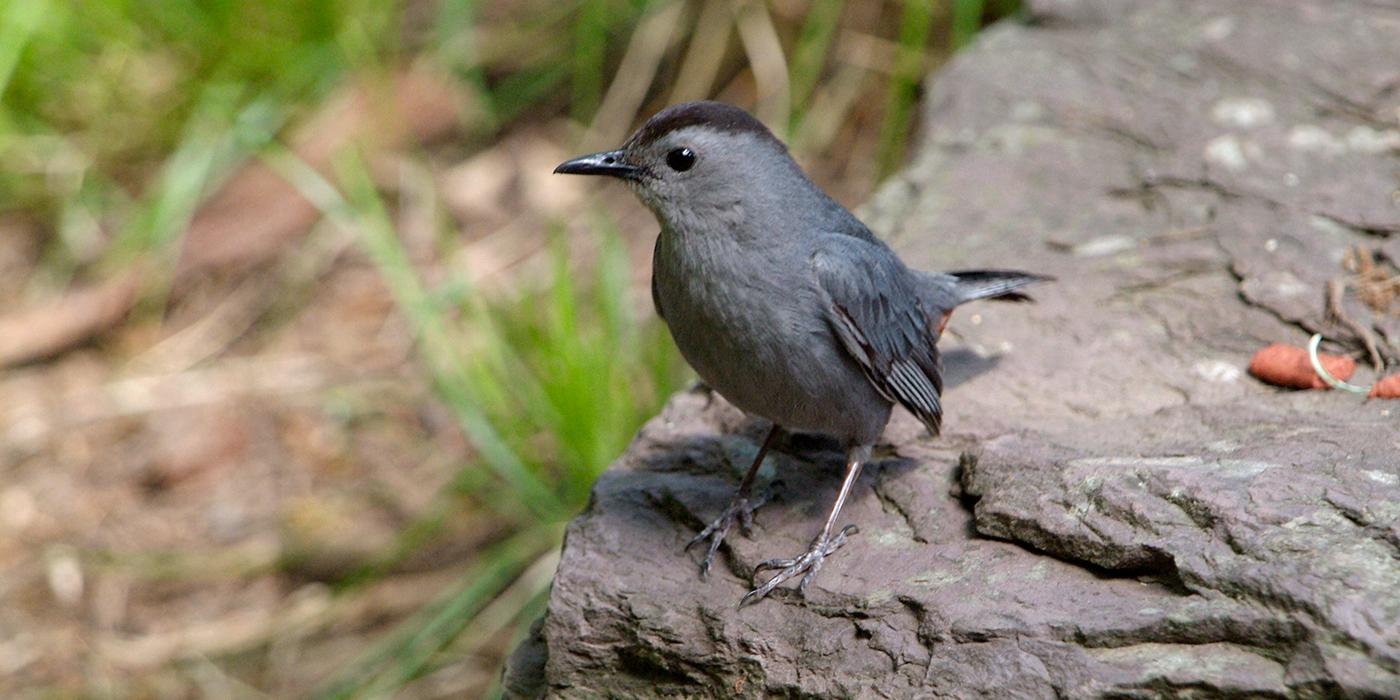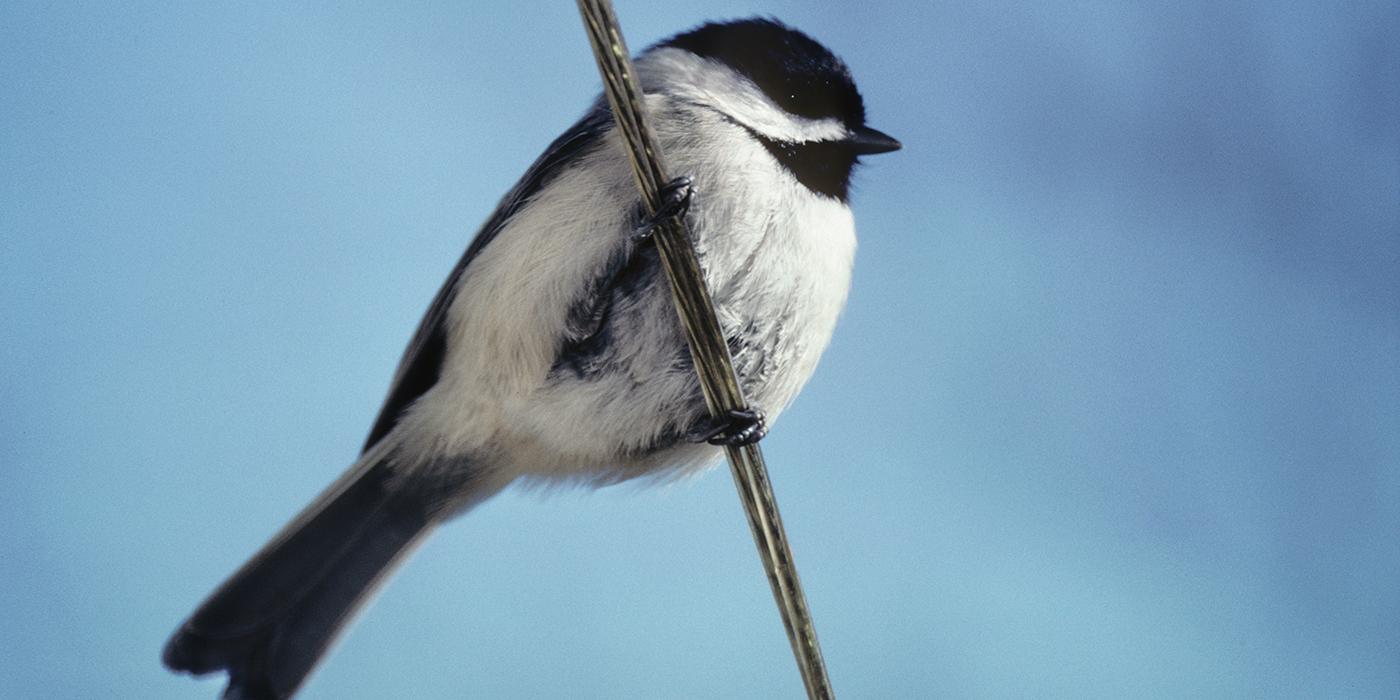Oh, Give Me a Home…
Purple Martin
The largest of the nine swallow species that breed in North America north of Mexico, the purple martin (Progne subis) maintains a geographic range that swoops from the western to the central provinces of Canada, dives across the equator, and glides into the South American continent east of the Andean mountain chain.
There are 3 subspecies of purple martins, distinguished according to the geographic region in which they breed. Progne subis subis, the eastern subspecies, generally returns to North America earlier than any other tropical-wintering migrant. Purple martin "scouts" are those individuals that arrives earliest from the Brazilian wintering grounds. These early returnees, contrary to popular myth, do not function as reconnoiterers "sent ahead" to stake out claims on prime nesting sites for the colonies. They are actually older males seeking prime real estate for themselves.
Purple martin research shows that the migrating birds take a number of routes into the continental US. For those crossing the Gulf of Mexico, scout-arrival timetables show 3 distinct gateways. A Florida path opens in late January. The Lousiana and south Texas avenues see scouts arriving by February 1st. The northward push continues until some scouts find Canadian territory by mid-April.
The 2 other subspecies, which breed in the western US, follow a more westerly route through Central America and Mexico. The subspecies hesperia ends up in the southwest region of the United States, while the arboricolorsubspecies occupies the mountains and Pacific coast region. Both of these more westerly subspecies tend to arrive somewhat later than their easterly counterpart.
Theoretically, the early-return policy is due to the intense intraspecific and interspecific competition for a limited number of good nest sites—one must arrive early or be faced with less-than-acceptable lodging for one's brood. purple martins build their nests in cavities, such as old woodpecker holes, man-made boxes, or, less frequently, in holes found in buildings or cliffs.
Within its eastern breeding range in the United States, the purple martin is the only bird species completely dependent upon humans for its supply of nesting sites. These are provided either in the form of purple martin "hotels", artificial nest boxes than can have tens of rooms arranged with porches, railings, and fancy spires atop, or by simpler hollow gourds.
Some 1 million North Americans currently qualify as purple martin landlords. Western populations rely mainly on natural cavitites either in trees or, in the case of the desert-dwelling race, in saguaro or organ-pipe cacti. Both western subspecies tend to nest in single pairs or in small groups.
The purple martin is nothing if not adaptable. It is one of a few bird species to undergo what James R. Hill, III (researcher and member of the Purple Martin Conservation Association) calls a "tradition shift". He includes it along with 2 other species that have undergone a nearly complete shift.
Chimney Swifts, for example, traditionally nested in huge, hollow trees. Today they are found in chimneys. Likewise, Barn Swallows, once relegated to cave entrances and rocky niches, today depend upon human structures such as barns, garages, or porches. House finches, snow buntings, bluebirds and several other species are partially dependent upon human structures for their nest sites, and may qualify as currently being in the process of a tradition shift.
Progne subis has a long history of co-existence with humans. Native Americans such as the Choctaws and Chickasees placed hanging gourds (calabashes) near their homes to attract the bird, a practice adopted by many black sharecroppers in the southern states.
While the reasons for Native American's doing so remain wrapped in mystery, the rationale for rural folk to encourage the presence of purple martins has a very practical explanation. As a territorial species quick to chase any number of predatory birds from its nesting area, purple martins serve to protect farm yard poultry from hawks.
Foraging behavior of the purple martins has also won the hearts of many people, giving it the nickname "mosquito-eating bird." Soaring and diving on outstretched wings, purple martins do indeed eat tremendous numbers of insects. However, claims that a bird can consume 2,000 mosquitoes per day, once asserted by some martin house manufacturers, are simply not true. Stomach content analyses reveal that less than 3% of the total volume of insects are mosquitoes.
This makes sense, given that the activity periods of freshwater mosquitoes and purple martins overlap for only about 10 minutes around dusk. Aside from this temporal mismatch, spatial separation (feeding martins fly relatively high in open sun whereas mosquitoes hunker amid humid areas near the ground) also speaks against the martin's role in controlling mosquitoes.
It is the glossy purple-black or steel-blue coloration of purple martin adult males that give them their name. The adult female is similar, but gray or dusky colored below. Like a number of other bird species, the purple martin exhibits "delayed plumage maturation."
This means that individuals, whether male or female, take more than 1 year to acquire their adult plumage. In fact, for martins it takes 2 years. So, not only do we see sexual dimorphism, but age-related dimorphism as well. The subadult plumage of a yearling male can be distinguished from that of a mature female (even though they resemble one another) or mature male. The same holds for the subadult plumage of yearling females, and even for "hatching year" (juvenile) birds.
In all, then, breeding purple martins have four distinct categories based on age and sex. Add to this the juvenile class and there are 5 categories—most of which demand a good pair of binoculars or a spotting scope to identify by plumage coloration. There are several competing hypotheses as to why purple martins have evolved this delayed plumage maturation, fostering passionate debate about the evolutionary reasons for such traits.
Several behavioral cues can help decipher this confusing mix. Breeding males, for instance, whether yearlings or fully adult, are the only ones that end their songs with the common clicking, "krieeek" sound. They make this sound with their mouth wide open. Males also frequently fly behind their mates when a pair flies to the ground to gather nesting material or to nearby vegetation to pluck green leaves. Males also chase females during courtship and pounce upon females during copulation.
The population of purple martins, regardless of the bird's adaptability, has certainly been affected by human activity. The long term trend is one of great loss. Historically, the purple martin used natural cavities for nest sites. The western population still makes use of such sites.
The eastern region of the US, however, presents a different story. A decades-old forest management practice of removing standing dead trees has eliminated many natural cavities. General habitat change across much of North America, coupled with the introduction of 2 exotic species that compete for nest cavity sites—the European Starling and the English House Sparrow—have further reduced the availability of naturally occurring cavities.
Due to this double-whammy of habitat change and competitive exclusion, it is estimated that the purple martin population now totals only 10% of its mid-1800s levels.
Short term data from recent decades also show population changes. The Breeding Bird Survey data spanning from 1966 to 1994 show some interesting (if enigmatic) trends in the purple martin's general population numbers. Populations in the northern portion of the range display long-term decline, and might be attributable in part to weather-related phenomena (inclement weather tends to keep birds from catching insects, affecting adults and nestlings alike).
The southern section of the breeding range, by contrast, shows an increasing population. As researchers are quick to point out, these data only provide geographic and temporal information about the population trends, and nothing about the underlying factors causing such trends. Systematic data collection in both the breeding and wintering ranges is essential in order to gain insights into the reasons for population changes in the purple martin.
Song recorded by Jim Stasz



